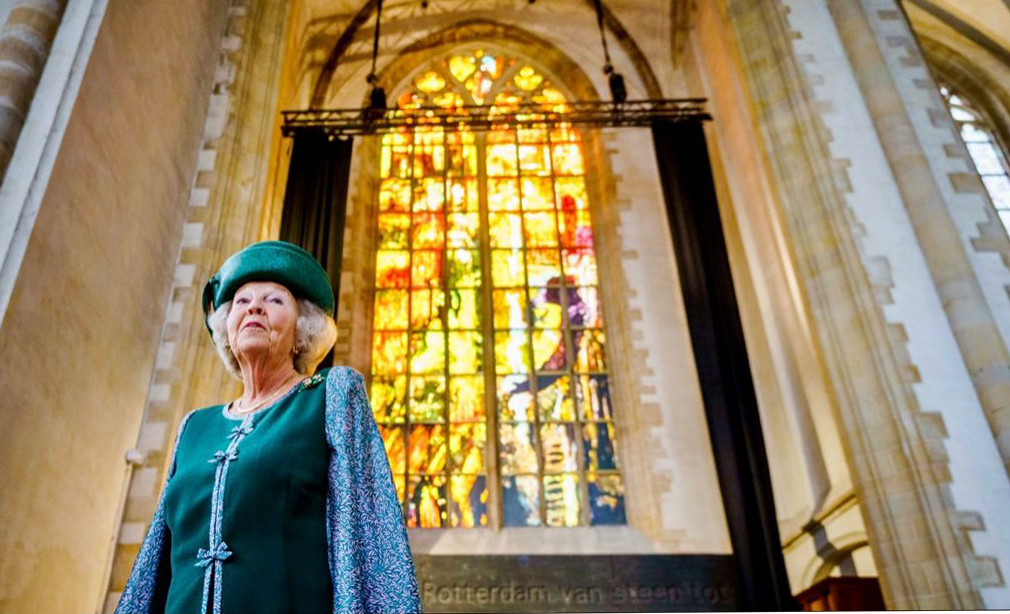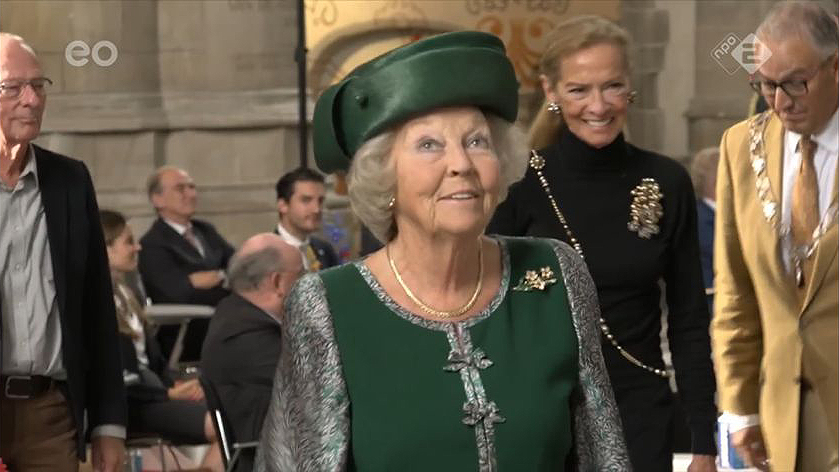
|
 |
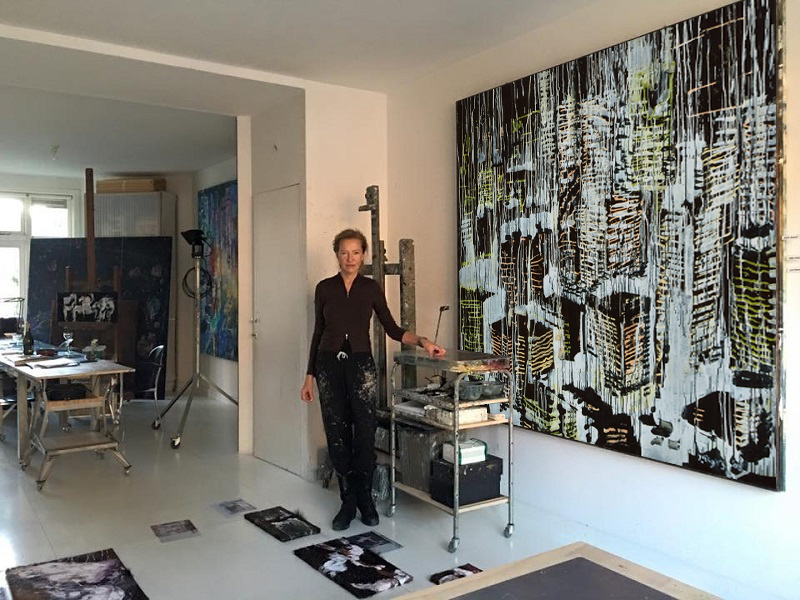
Atelier Amsterdam, 2016 |
photo: Kaoru Yamamoto |
Janneke A.E.M. Viegers (Janneke, Adriana Engelina Maria Viegers) Born: Nijmegen, the Netherlands, 09-01-1952 Dutch Visual Artist; lives and works in Amsterdam. She studied at the Academy for Visual Arts in Arnhem: First degree Art and Art History, graduated in 1976. At this Academy she taught for 5 years, as well as at the Rietveld Academy in Amsterdam. Viegers makes large oil paintings of Interiors and World cities in aerial perspectives. These last ones are to be found in Dutch embassies over the world. Besides these, she makes small city views, many portraits and animations. Viegers exhibits since 1980, among them are a number of solo expositions. The works can be found in several public and private collections, including the First and Second Chamber of the Dutch Government, The Hague; the European Parliament, Brussels / Strasbourg; the Stedelijk Museum, Amsterdam; the Amsterdam Museum; the CODA Museum, Apeldoorn and the Museum for Modern Art in Arnhem. The Nijmegen municipality purchased for the City Archives a diptych of the city in drone view. In 1998 the Netherlands, by the States General, contributed with a gift for the European Parliament a four-panel painting by Janneke Viegers. The work consists of a composition of four Dutch impressions: Rembrandt, Anne Frank, a Mill and the Binnenhof (the gouvernemental courtyard). In 2018 the Amsterdam Museum showed the painting 'Schiphol' from its collection at the exhibition 'De mooiste stad', 'The Most Beautiful City through the Mayors Eyes'. A 9 meter high stained glass window by Janneke Viegers in the Laurenskerk in Rotterdam, named 'Peace and Reconciliation', depicting the bombing of 80 years ago, on Rotterdam, Coventry and Dresden in bird's eye view, will be solemnly unveiled by the former Queen of the Netherlands, Princess Beatrix on September the 10th 2021. In April 2025 Viegers received the Killiam Prize for her city paintings in bird's-eye view perspective. |
|
2021, ONTHULLING RAAM 'VREDE EN VERZOENING' TE ROTTERDAM |
| Prinses Beatrix bij het raam Vrede en Verzoening in de Laurenskerk, Rotterdam
|
Prinses Beatrix, Kunstenaar Janneke Viegers en Burgemeester Ahmed Aboutaleb
|
|
2024 HISTORY, (information: www.viegers.biz : SPATIALS) |
||
| 'The Palace Paradise and the Triangular Obelisk; The State'. |
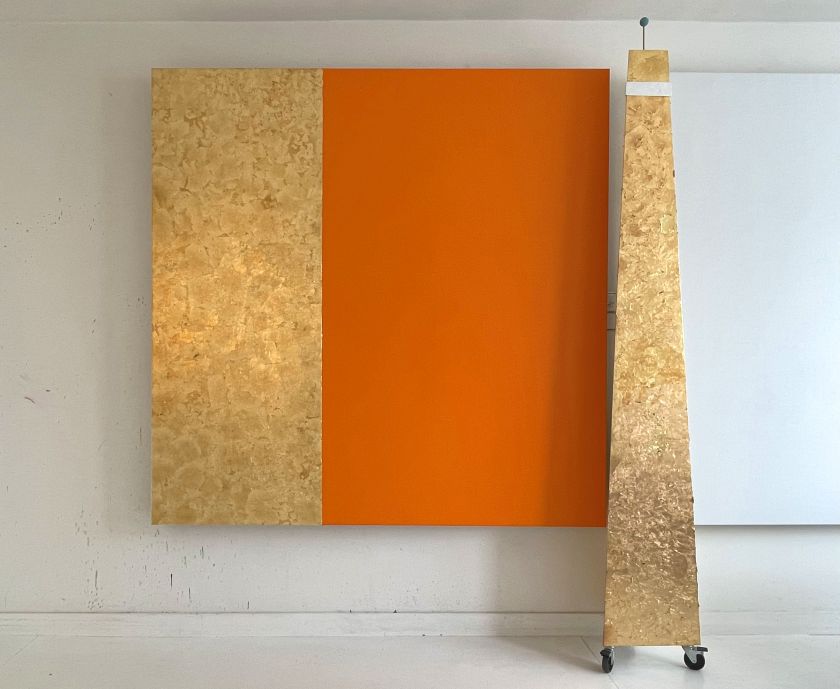
|
| Painting: 2x2m. Obelisk: triangular, height:2.55m. oil paint and gold leaf on linen and wood.
|
| JANNEKE VIEGERS. A storm that calls for 'silence' That "art speaks for itself" is not as self-evident as we are told, strangely enough, mainly by speakers about art. If art were not talked about, the greater part of visual art production would immediately cease to be silent about itself. Without art criticism and journalism and all that is given to art in the way of verbal garb (among others by eloquent artists), many works of art would wither away to sound installations without a tuner; and then we will leave it open whether Baudelaire was right when he wrote that art criticism is more often guilty because it amplifies the voice of the artist than because it silences it. And yet: when someone really does well. for the fatherland, with no other credentials to justify his/her work than the talent that was not earned on anything, perfect genes on the father's and mother's side - painting is and remains a matter that is hardly open to discussion. Sometimes you meet someone who is so good at it that you know: there is no dry bread to be made here for an art writer. Janneke Viegers belongs to that breed, who has an inordinate amount of talent, so that it makes you feel anxious when you think about human equality and about the similarity of talents (from the new testament, therefore), which does not give the most talented the best chances. Anyone who looks at the paintings of Janneke Viegers feels like an interpreter too much, so that he counts himself lucky that there are other paintings that speak so imperfectly for or so cunningly against themselves that one becomes talkative as a viewer and takes sides with them. How, for example, does one tell what Janneke Viegers 'is busy with' (because that is where every interview and contemporary discourse begins!)? Of course, it is also difficult for the speaking water that in this oeuvre no themes can be identified with which the post-modern courage of despair prefers to concern itself. Unless it is those romantic forests (Berg-en-Dal forests?) and tilted Vermeer interiors, which may be more about romanticism, impressionism and the possibility of 'belle peinture' than about forests and interiors (although, if it is done with such authoritarian elan, I could care less whether the problem is in the painting or in the painter). In fact, one can only say about a 'Viegers' that everything she does is in a festive way in accordance with the spirit and body of painting. She may consider herself lucky that she is presenting herself at the beginning of this fin de siecle of the 20th century, because finally one may now have the entire past of painting before one again. Whoever has the tradition, now has the future. Janneke Viegers has that tradition. Everything she paints reminds one of direct, impressionistic perception of distant memories, so that one may perhaps speak of an impressionism of the second degree and sometimes even of a meta-baroque, which has the baroque itself as its subject. The painting does not work so much as an eye but as a memo-technical instrument, as a memory machine, which lets the snow of yesterday-the snow of Rik Wouters-fall on the far-raining landscapes of today. At least the worn-out term 'painting as a process' may still get a meaning, which does not exclude painting 'for profit or loss'. Janneke Viegers paints like a chess player plays chess and a singer sings. Nobody asks those people what they are doing. When a Viegers paints a 'Viegers' you have to look and keep your mouth shut. The thinking comes home. At most you think: hats off, gentlemen, and let the ladies stand to attention too. Because this storm calls out imperiously 'Silence'. Maarten Beks |
|
2025 VICTORY, (information: www.viegers.biz : SPATALS) |
||
| 'The Landscape, the Portrait and the Coat of Arms or Mourning Shield'. |
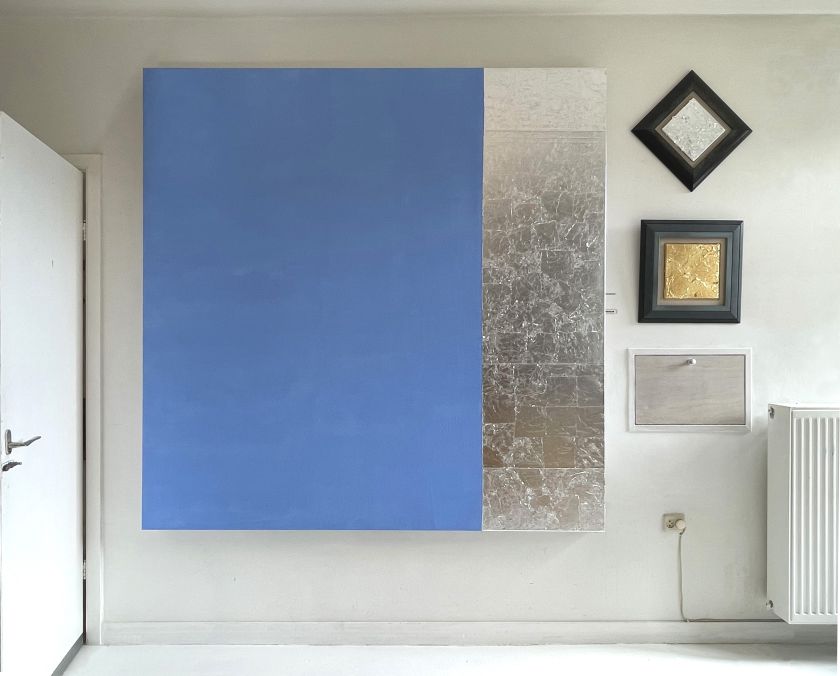
|
| Paintings: 2x2m. 24x24cm. 20x20cm. oil paint and gold/silver leaf on linen.
|
2025 JURY REPORT KILLIAM PRIZE ( see works EXTERIORS www.viegers.one )
At first glance, Janneke Viegers' paintings seem abstract, large square canvases with paint that drips, circles through each other, with clashing colours, in earthy or cool tones. But then concrete objects become visible, houses, statues, streets with cars, a cluster of planes. A bird's eye view, nowadays we might rather say drone perspective, gives a completely different view of the city than the low-to-the-ground perspective of most urban illustrators and painters. Janneke Viegers does not paint her cityscapes clearly and meticulously, as painter and cartographer Cornelis Anthonisz depicted medieval Amsterdam in a bird's eye view in the middle of the 16th century. Her urban landscapes depict the chaos of the city, in which rivers, roads and buildings merge into each other. Sometimes you wonder, is everything okay down there? There is often something dark about her work. Or doom and drama reign, as in the painting of the empty Dam during corona. Viegers' paintings are more an analysis of the city's state of mind than a topographical representation. And yet we recognize Amsterdam in this mix of abstraction and figuration. Her paintings invite us to look longer, to try to figure out where we are in the city. They are full of man-made things: buildings, streets, statues, airports. Even the river Amstel has been canalized. But the city's inhabitants themselves are missing. At a time when we can zoom in on every detail with Google Maps and Google Earth, Janneke Viegers brings mystery to our image of the city. Just look, not everything is always visible. And yet, as the artist herself puts it, the bird's eye view gives a sense of context: 'the city is yours'. Janneke Viegers chose the entire city as her work area, the old city centre but also the area around the Rembrandt Tower and Schiphol. In this way, since the eighties, painting with her fingers in plastic gloves, she has built up an impressive oeuvre. For the third edition of the Tim Killiam Prize, the jury selected an artist who very idiosyncratically and consistently depicts her own city and other cities, thereby inviting us to look at our own city Amsterdam with different eyes, but also at the city as a biotope. The jury of the Tim Killiam Prize 2025 consists of:
|
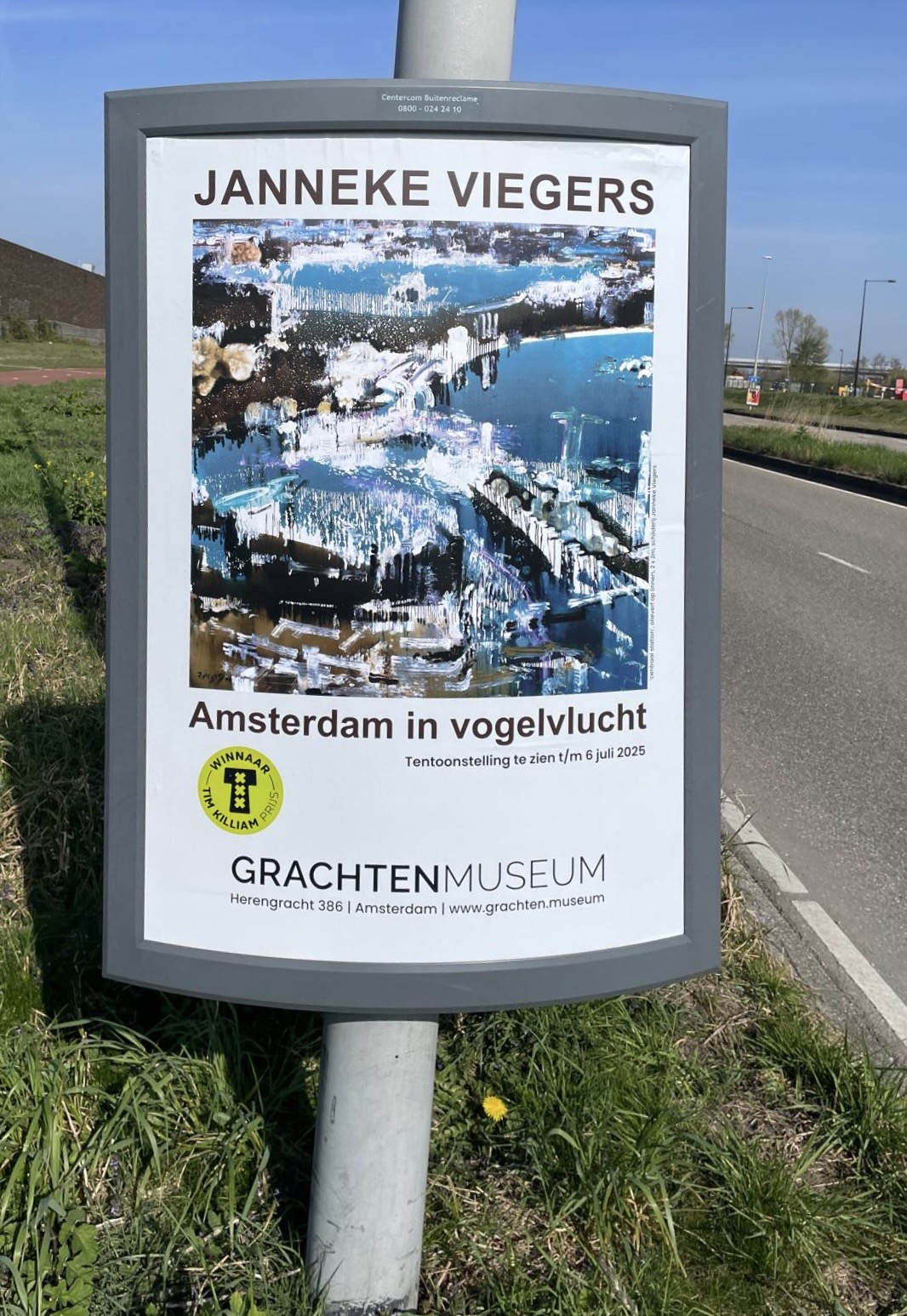
|
| Billboard Amsterdam, April 2025
|
| Copyright © 2025, Janneke Viegers No content of this website may be published elsewhere without strict permission from the author. |
